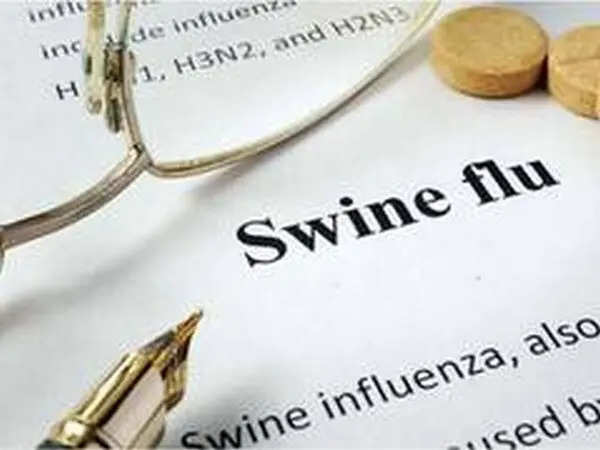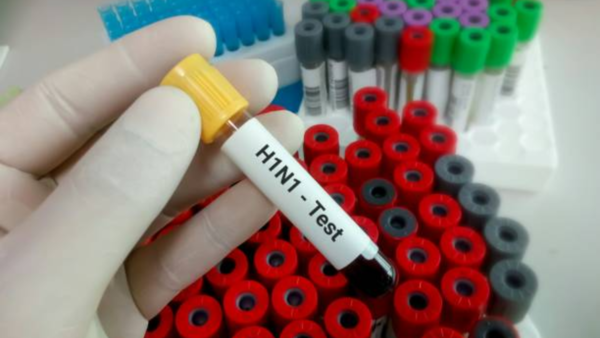The number of swine flu (H1N1) cases in India is rapidly increasing, with thousands of infections reported in different areas. Government statistics show that as of December 2024, the sickness had infected over 20,414 people and killed 347 of them. States like Delhi, Kerala, Maharashtra, Gujarat, Tamil Nadu, and Rajasthan have been especially impacted by the spike in cases.
It’s important that we understand what swine flu is, why cases are increasing, and how to protect ourselves because doctors are observing a rise in individuals showing flu-like symptoms.
What is Swine Flu (H1N1)?
Swine flu, also referred to as influenza A (H1N1), is a respiratory infection caused by the H1N1 virus. Originally isolated in pigs, this virus evolved and began infecting humans, resulting in massive outbreaks. Swine flu symptoms are similar to seasonal flu, including fever, cough, sore throat, body pains, chills, and tiredness. In severe situations, it can cause pneumonia and other respiratory issues.

Delhi reports unexpected surge in swine flu and other viral cases
Why is India seeing a surge in cases?
In India, influenza infections normally peak between January and March, followed by August and October. Currently, the most common viruses in circulation are Influenza A (H1N1) and its subtype H3N2. Several factors contribute to the increase of cases:
- Seasonal pattern: The monsoon and winter months create helpful circumstances for the virus to grow and spread.
- Increased travel and gatherings: Following the epidemic, social interactions and travel have increased, making the virus more easily transmitted.
- Many people have weakened immunity as a result of changing weather, COVID-19 problems, and stress-related health difficulties.
- Delayed vaccination: Many people are vulnerable because they are unaware of and unable to obtain flu shots.

Dr jejoe karankumar, Medical Director, Abbott Indiasaid “In India, where our healthcare system is already under pressure from infectious diseases, it’s important to raise awareness on flu vaccination. Getting vaccinated helps your body build defenses against the flu. It’s not just about protecting yourself; it’s a public health step that can reduce the economic and social problems caused by flu outbreaks.”
How does Swine Flu spread?
Swine flu spreads similarly to regular flu viruses. The primary modes of transmission include:
- Person-to-person contact: Respiratory droplets from an infected person’s cough, sneeze, or speech can transmit the virus.
- Touching infected surfaces: The virus can live for hours on surfaces such as handrails, tables, and doorknobs, raising the chance of infection.
- Close contact with sick people: The danger of contracting the virus is greatly increased when you spend time with someone who displays flu-like symptoms.

Dr. Vivek Nangia, Principal Director & Head, Institute of Respiratory, Critical Care & Sleep Medicine, Max Hospital, Delhi, also added, “Getting vaccinated is one of the best ways to protect yourself from the flu. The flu vaccine is safe, effective, and updated every year to match the most common virus strains. The World Health Organization (WHO) keeps an eye on flu viruses and updates the vaccine twice a year for the influenza seasons. Just one shot each year can greatly reduce the severity of the flu and prevent serious complications like pneumonia. By getting vaccinated, you not only protect yourself but also help keep those around you safe.”
How to prevent Swine Flu?

While there is no foolproof way to avoid swine flu, following these preventive measures can significantly reduce the risk:
- Frequent handwashing: Wash hands with soap and water for at least 20 seconds. Alcohol-based hand sanitizers can also be effective.
- Wear a mask: Especially in crowded places, wearing a mask helps prevent inhaling infected droplets.
- Boost immunity: Eat a balanced diet, exercise regularly, and get adequate sleep to strengthen the immune system.
- Avoid close contact with infected individuals: If someone around you is showing flu-like symptoms, maintain a safe distance.
- Get vaccinated: The flu vaccine provides protection against influenza viruses, including H1N1.
- Disinfect surfaces: Regularly clean frequently touched surfaces to prevent viral contamination.
- Practice respiratory hygiene: Always cover your mouth and nose while coughing or sneezing and dispose of tissues properly.
Are there medications for Swine Flu?
Yes, antiviral medications like oseltamivir (Tamiflu) and zanamivir (Relenza) are recommended for treating swine flu. These drugs work best when taken within the first 48 hours of symptom onset, reducing the severity and duration of the illness. However, they should only be taken under medical supervision.
When to seek medical help?
While mild flu symptoms can be treated at home, seek urgent medical attention if you have:
- Shortness or difficulty breathing
- Chronic chest discomfort or pressure
- Confusion or dizziness.
- A high temperature for more than three days.
- Severe vomiting and dehydration








